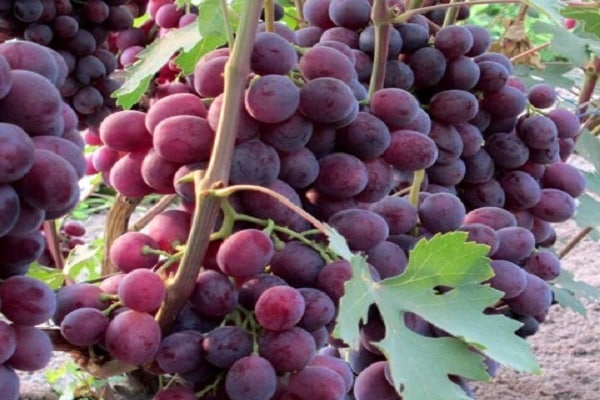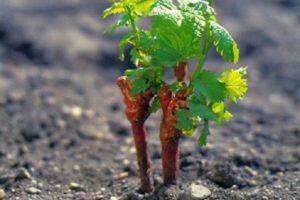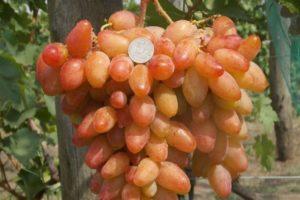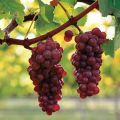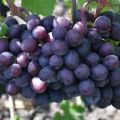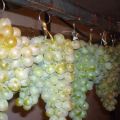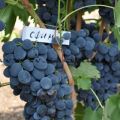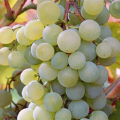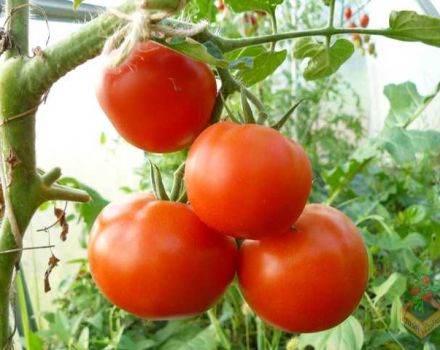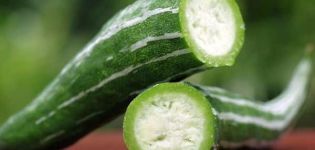Description and history of the grape variety Zarya Nesvetaya, cultivation and care
The grape species Zarya Nesvetaya was bred as a result of crossing the Talisman with the Cardinal. The hybrid turned out to be excellent: juicy, ripe berries with a fruity taste, good survival and endurance. Experts claim that it looks like a nutmeg variety with a light, almost imperceptible tart note. In addition, the new species is almost not afraid of garden pests.
Breeding history
Dawn was bred by E.G. Pavlovsky, a well-known popularizer and breeder of grape varieties. As progenitors, 2 species were chosen - Cardinal and Talisman. The hybrid exhibits early properties, the berries ripen in 100 days. Belongs to canteens, according to the climatic zone, it is inclined to the southern regions - the Black Sea, the Don region and the Caucasus. This can be regarded as both a virtue and a disadvantage. It is clear that it will be difficult to grow these grapes in the Middle Strip.
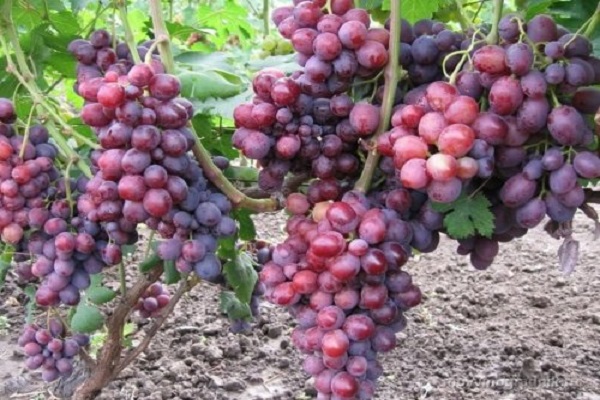
Strengths and weaknesses of the variety
There are no ideal varieties: experienced growers and agronomists know this. The early ones do not always differ in sweetness and acceptable taste; the late ones do not have time to mature in cold climates. Therefore, breeders carry out crossbreeding, trying to develop a hybrid suitable for most conditions of the extended Russian Federation, from the Moscow region to Siberia and the Far East.
The advantages of Zarya Nesveta are expressed in the following:
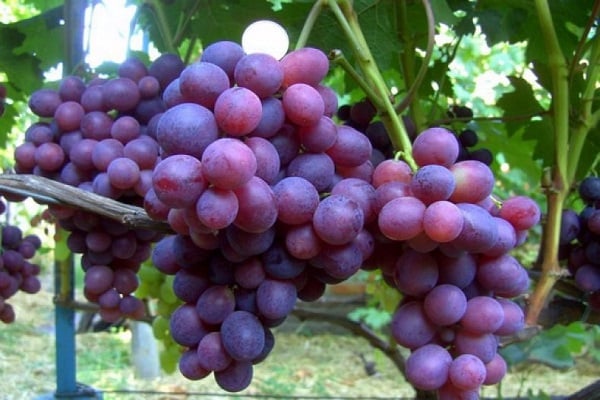
- table variety with a heavy and harmoniously formed bunch, pleasant berry taste;
- strong vine, with bisexual flowers, no difficulty in pollination;
- proper care allows you to get up to 3 brushes on one shoot;
- the average weight of a bunch is 600-1000 grams (specimens up to 2 kilograms are found);
- berry brightly colored, burgundy, elongated. The shell is matte, moderately dense;
- the pulp is sweet, with a rich nutmeg taste, a little bit tart;
- in a berry weighing up to 12 grams, no more than 2 seeds;
- grapes are suitable for home preservation, juice, tinctures, winemaking.
The disadvantages of the variety are manifested in its sensitivity to cold (needs shelter for the winter), susceptibility to pests. Sometimes the berries are heavily eaten by birds. Experienced growers also note that Zarya has weak stalks that are sensitive to injury.
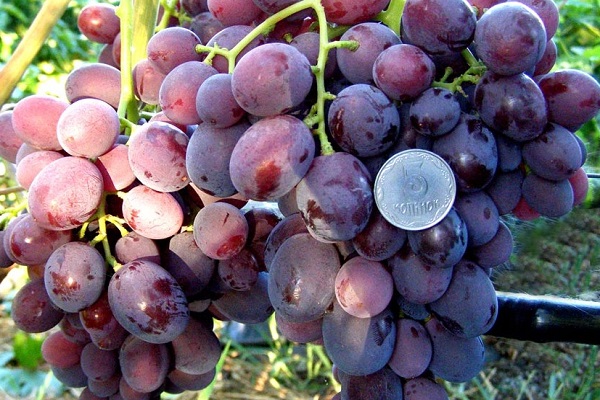
Characteristics and description of grapes
The variety grows and develops well, tying large clusters. There is practically no peeling (the formation of small berries), the configuration of the bunks is conical.Fruits are rounded, tending to the shape of an ellipse, saturated pink shade (ripening with a transition to purple).
The rind is dense, can withstand minor influences, but soft, elastic. As it matures, a characteristic waxy coating appears on it. The heart is sweet, but not cloying, tasty, juicy. The color of the vine is brownish-green with brownish nodes. The leaf is classic, 5-lobed and bright green. Flowering starts early, the inflorescences are bisexual - no need to worry about pollination.
For all its unpretentiousness, the variety gravitates towards a warm climate, where it ripens better and faster, bears fruit.
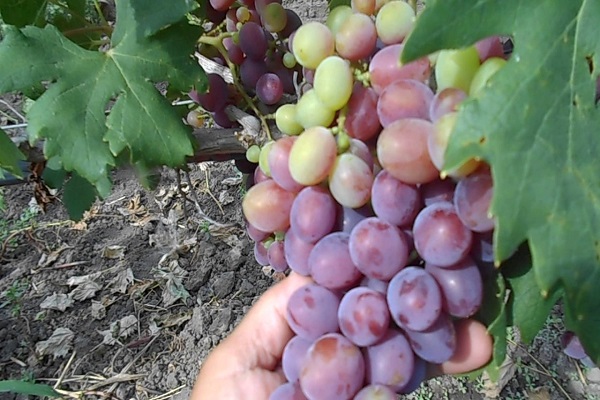
Bush and shoots
The bush shows resistance to high humidity, which is important for grapes, which are usually sensitive to root rot. The shoots are strong, dark green, withstand cold climates when temperatures drop to -23 degrees. On one branch, 2-3 grooves are usually tied.
Leaves
The leaf of Zarya Nesvetaya is small, unremarkable, rounded, with 5 protruding teeth-lobes.
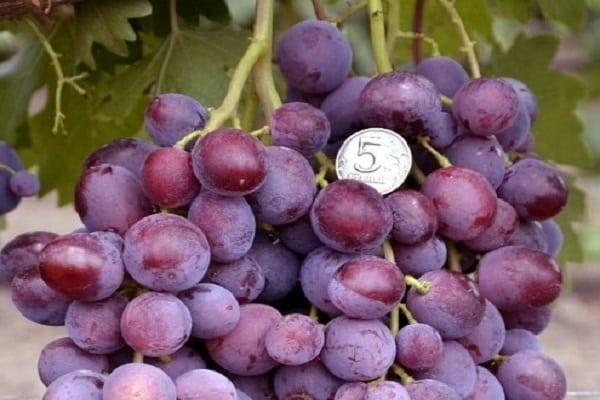
Brushes and peduncles
The brushes are dark green, they have a weak peduncle - this should be taken into account when pruning and caring for grapes. Peduncles of a double set are male and female, therefore, pollination of the species occurs without outside interference.
Fruit appearance and taste
The berry is rounded, slightly elongated, dark pink (to purple) hue, with a light white waxy bloom. The taste is soft, full-bodied, with characteristic nutmeg notes, sweet, but not sugary (20% sugar). The weight of one grape is up to 12 grams, the whole bunch - up to 1 kilogram.
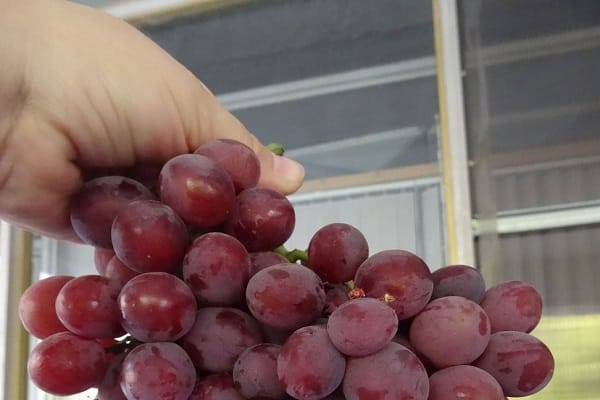
Reproduction methods
The variety is well bred by cuttings, there is nothing new in this technique. Planting is allowed in 2 selected periods: spring or autumn. For future bushes, a place, a soil mixture, must be prepared. It is necessary in advance to provide for the device of a trellis or stands to support a rapidly growing vine.
Features of growing and care
Planting begins with fertilizing the soil. For this, organic and mineral components introduced into the soil are used. The planted cutting is watered abundantly, the ground around it is mulched. Zarya does not require constant pruning, like some other varieties, on average, it needs to leave 6-8 eyes.

In early spring, a special water-charging irrigation is carried out, which allows the upper layers of the soil to be saturated with liquid, to deliver it to the roots. The second time the same dose of moisture is given to the vine during flowering, when the ovary is formed. Watering is completely stopped 14 days before the start of fruiting.
Preventive treatment with chemicals from the presence of pests is carried out on an ongoing basis, this will strengthen the immunity of the bush and protect the crop. Before hibernation, the bush is pruned, covered (especially in cold areas).

Landing
Before planting, choose a place - it is better if it is an unshaded, bright area, well-ventilated, but not in a draft. Zarya Nesvetaya admits some waterlogging, but this does not mean at all that the soil for planting it must be swampy, with a high level of groundwater, or heavy clay.
Drainage from stones, gravel is laid at the bottom of the pit, and an earthen mixture of soil and fertilizer is poured over it (humus can be used). It is recommended to mulch the grapes to preserve and accumulate nutrients.
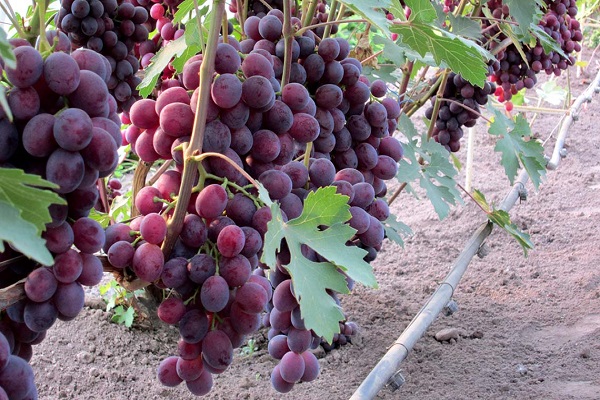
Foliar and root fertilization
To feed Zarya, root and superficial (foliar) dressings are used. The bush receives the first dose of fertilizer when planting, subsequently humus, mineral complexes are regularly applied, mulching is carried out.
During fruiting, spraying with aqueous solutions of potassium, nitrogenous or phosphorus-containing fertilizers is allowed - this will help the berries to ripen and fill with juice.

Watering mode
The variety is moisture resistant, some overflow is allowed when caring for a bush. You just need not to overdo it, so as not to cause rotting of the root system. The watering regime is regular, but not excessive: about 2 weeks before the berries ripen, it is stopped altogether.
Shrub formation and pruning
The bush does not need "special" pruning, it copes well with the formation of shoots on its own. It is recommended to leave up to 8 eyes on the vine (no more than 40-42 on the bush). A support should be installed on the site along which shoots will develop.
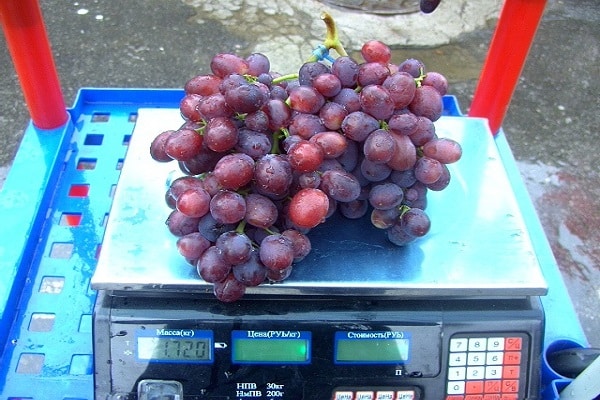
Seasonal processing
It consists of pruning (spring and autumn), spraying with chemicals and fertilizing. The variety is not particularly resistant to garden pests, therefore it needs regular (2-3 times) treatment with fungicides.
It is recommended to spray Zarya twice before flowering and once after.
In general, the species resists mildew relatively well: its resistance to this common disease is rated at 7 points out of 10.
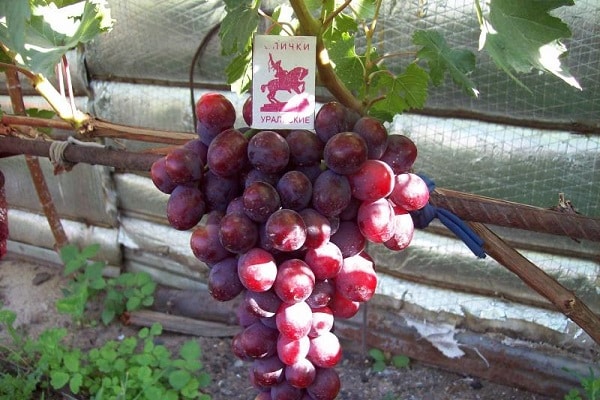
Preparation for wintering
It includes the removal of damaged areas of the vine, cleaning from the remnants of berries, loosening the soil and shelter. The variety belongs to frost-resistant, but protection from cold weather will not be superfluous: it will help the bush to maintain its vitality, "wake up" faster in spring. For shelter, mulching, backfilling with soil, sawdust, burlap, even snow (as soon as it falls) is used.

The period of the beginning of fruiting
Begins 100-115 days after the first bud is hatched. It may vary slightly depending on the region of growth; in a warm climate, Zarya Nesvetaya will ripen earlier, but not much.
Ripening and harvesting terms
The average ripening period of berries is 105 days, this is the end of July-beginning of August. At the same time, they begin to harvest, since the bunch has a weak stalk, easily damaged by the wind or by careless handling.
It is believed that the berries can hang on the vine for some time without deterioration in quality and damage to the taste / presentation, but it is better to cut them off in time.
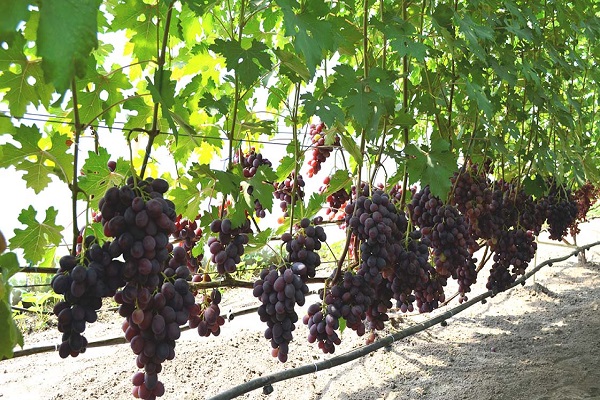
Diseases and pests - methods of dealing with them
The variety shows resistance to downy mildew (mildew), but is damaged by fungi and garden pests. Weevils and leafworms can cause significant harm, especially during the formation of inflorescences. For Zarya Nesvetaya, insecticide treatment is an important measure, the availability of the crop and its volume depend on it.
Processing is carried out 30 days before grape harvest. To prevent damage by insects that penetrate deeply under the bark, in the spring, dead fragments are cleaned, followed by burning away from the plant.
